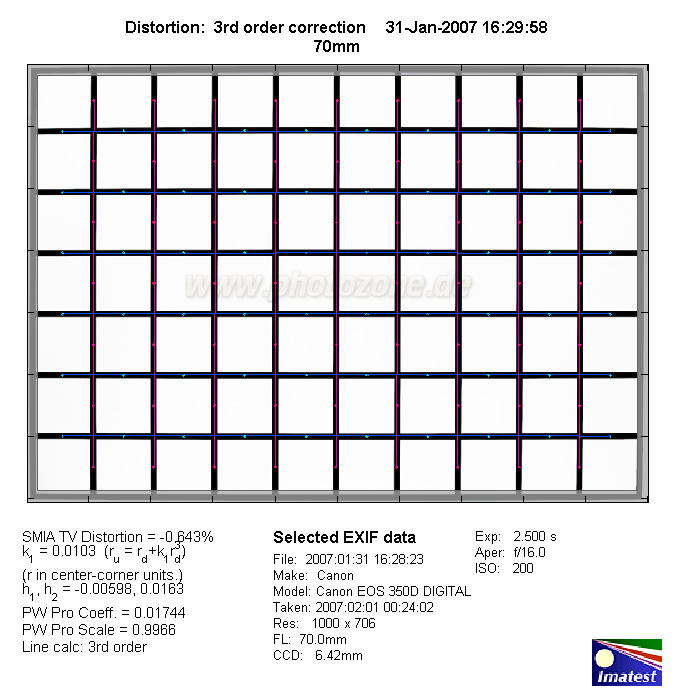|
Canon EF 70-200mm f/4 USM L IS - Retest @ 15mp - Analysis |
|
Lens Reviews -
Canon EOS (APS-C)
|
|
Page 2 of 2

Distortion
The level of distortion is very low for a zoom lens with a minor degree of barrel distortion
at 70mm changing to minor pincushion distortion at 135mm and 200mm.
|
Move the mouse cursor over the focal length text marks below to observe the respective distortion
|
| 70mm |
135mm |
200mm |
|

|
Vignetting
Vignetting is very well controlled with the lens. At 70mm and 135mm vignetting is quite already
negligible at f/4. At 200mm there's slightly more vignetting at f/4 (~0.65EV) - this may be noticable but
it's usually nothing to worry about. In very critical situations you may prefer to stop down by a half
f-stop to eliminate the remaining artifacts.

MTF (resolution)
The Canon EF 70-200mm f/4 USM L IS showed a breathtaking performance in our initial test (@ 8mp). However,
the 15mp sensor used in the EOS 50D is a different caliber and it shows. The provided quality is still very impressive - also regarding the uniformity across the range - but the lens does not play rock'n roll with the sensor anymore. The center performance is generally very good with a few peaks into excellent territory. The border quality remains very good at all tested settings.
Please note that the MTF results are not directly comparable across the different systems!
Below is a simplified summary of the formal findings. The chart shows line widths per picture height (LW/PH) which can be taken as a measure for sharpness.
If you want to know more about the MTF50 figures you may check out the corresponding Imatest Explanations
Chromatic Aberrations
The lens also showed a very good behavior regarding lateral chromatic aberrations (color
shadows at harsh light transitions) which peak around 0.9 pixels on the average at the image
borders. This is usually nothing to worry about.

Verdict
The Canon EF 70-200mm f/4 USM L IS is capable to deliver a near-flawless performance
is all categories. The resolution figures are very impressive even at max. aperture.
Distortions, vignetting and CAs are usually nothing to worry about either. The build
quality is excellent with the new sealing as a another highlight. On top of that the
lens features a image stabilizer with an efficiency equivalent to 4 f-stops (at cost of
shutter speed if you exploit the potential to the max). The only heartbreaking drawback
for some is the price tag which increased significantly to a whopping grand - that's
almost the double price of the EF 70-200mm f/4 USM L (non-IS).
It should also be mentioned that the EF 70-200mm f/2.8 USM L (non-IS) is just as expensive
so if you feel an itch for a faster lens with a better bokeh potential this one may also
worth a serious thought.
|